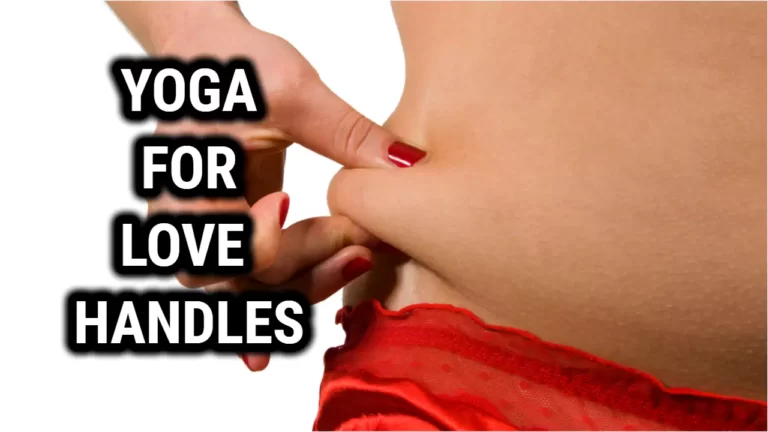Power Of Yoga Mudras: Simple Hand Gestures To Enhance Your Practice

Yoga is a powerful practice that has been around for centuries. It is known to bring balance to the mind, body, and soul. One aspect of yoga that is often overlooked is the practice of mudras. Mudras are simple hand gestures that can enhance your yoga practice and bring even more benefits to your mind and body.
These hand gestures are believed to help channel energy flow throughout the body, promote healing, and improve mental clarity. They can be practiced during asanas, meditation, pranayama, or kirtan to help quiet the background chatter of your mind and bring focus to your practice.
Mudras can also remind you of two important pieces of yogic wisdom: first, that you are already whatever you seek to be, and second, that the power lies within you.
Whether you are a beginner or an experienced yogi, incorporating mudras into your practice can take your yoga journey to the next level. In this article, we will explore the power of yoga mudras, their benefits, and how to practice them. With a little bit of knowledge and practice, you can harness the power of these simple hand gestures to deepen your yoga practice and bring even more balance and harmony into your life.
What are Yoga Mudras?
Yoga mudras are hand gestures that are often practiced in yoga and meditation. These gestures are believed to facilitate the flow of energy in the subtle body and enhance one’s journey within. Mudras have been used for thousands of years to positively influence both the mind and body.
There are many different types of mudras, each with their own unique benefits. Some mudras are simple and can be practiced by anyone, while others are more complex and require more experience and knowledge.
Yoga mudras are often used in conjunction with pranayama (breathing exercises) and asanas (yoga poses) to deepen the practice and help achieve a higher state of consciousness. They can also be practiced on their own as a form of meditation.
Some common mudras include:
- Gyan Mudra
- Prana Mudra
- Apana Mudra
There are many other mudras to explore, each with their own unique benefits. Incorporating mudras into your yoga practice can help deepen your connection to your body, mind, and spirit.
Types of Yoga Mudras
Mudras are hand gestures that are used in yoga to enhance the flow of energy in the body. There are various types of yoga mudras, each with its own unique benefits. Here are some of the most common types of yoga mudras:
- Chin Mudra: Also known as Gyan Mudra, this mudra is performed by touching the tip of the index finger to the tip of the thumb, while the other three fingers are extended. It is said to increase concentration and reduce stress.
- Prana Mudra: This mudra is performed by touching the tip of the thumb to the tip of the little finger, while the other three fingers are extended. It is believed to increase vitality and reduce fatigue.
- Apana Mudra: This mudra is performed by touching the tips of the middle and ring fingers to the tip of the thumb, while the other two fingers are extended. It is said to help with digestion and elimination.
- Vayu Mudra: This mudra is performed by touching the tip of the index finger to the base of the thumb, while the other three fingers are extended. It is believed to reduce anxiety and nervousness.
- Surya Mudra: This mudra is used to boost energy levels and is formed by pressing the tip of the ring finger to the base of the thumb.
- Shuni Mudra: This mudra is used to increase patience and self-discipline. It is formed by pressing the tip of the middle finger to the base of the thumb
These are just a few examples of the many types of yoga mudras that are available. Each mudra has its own unique benefits, and can be used to enhance your yoga practice in different ways. By incorporating mudras into your practice, you can deepen your connection with your body and mind, and experience a greater sense of peace and wellbeing.
Benefits of Practicing Yoga Mudras
Yoga mudras are simple hand gestures that can be practiced during yoga or meditation to enhance your practice. They have a variety of benefits, including:
- Reducing Stress: Certain mudras, such as the Gyan mudra, can help to reduce stress and anxiety levels. This is because they activate specific energy channels in the body that promote relaxation and calmness.
- Improving Concentration: Practicing mudras regularly can help to improve concentration and focus. The Prana mudra, for example, is known for its ability to increase mental clarity and alertness.
- Enhancing Physical Health: Many mudras are also believed to have physical health benefits. The Varun mudra, for instance, is thought to help regulate the water element in the body, which can improve skin health and reduce dryness.
- Boosting Energy: Certain mudras, such as the Suraya mudra, can help to boost energy levels and reduce fatigue. This is because they activate specific energy channels in the body that promote vitality and strength.
Overall, incorporating yoga mudras into your practice can have a positive impact on both your physical and mental health. They are simple, yet powerful tools that can help to enhance your overall well-being.
Also Read: What Is Shakti Yoga? – Unleash The Power within and Connect with the Divine
How to Practice Yoga Mudras
Yoga mudras are simple hand gestures that can enhance your practice. Here are some steps to help you get started:
- Choose a mudra: There are many types of mudras, each with its own benefits. Choose one that aligns with your intention for your practice.
- Sit comfortably: Find a comfortable seated position with your spine straight and your hands resting on your knees.
- Relax: Take a few deep breaths to relax your body and mind.
- Bring your hands into the mudra: Follow the instructions for the specific mudra you have chosen. Some mudras involve touching specific fingers together or placing your hands in a certain position.
- Focus on your breath: Once your hands are in the mudra, focus on your breath. You can count your breaths or simply observe them.
- Hold the mudra: Hold the mudra for as long as you like. Some mudras can be held for just a few breaths, while others can be held for several minutes.
- Release the mudra: When you’re ready to release the mudra, slowly bring your hands back to your knees and take a few deep breaths.
Remember that mudras are a powerful tool to enhance your practice, but they should not be used as a substitute for proper medical treatment. If you have any medical conditions or concerns, consult with your healthcare provider before practicing yoga mudras.
Combining Yoga Poses With Mudras
Now that we have discussed the modifications and variations of traditional mudras, let’s take a look at how to combine yoga poses with mudras to enhance our practice. By combining these two powerful techniques, we can gain greater insight into our practice and access deeper levels of relaxation.
Here are some ways to bring yoga poses and mudras together:
- Utilize the hand gestures in your poses: As you move through your yoga postures, use the mudra hand gestures as a way to focus your attention on specific areas of the body or breath.
- Hold the pose while in a mudra: While holding a pose such as Warrior I, come into a mudra position with the hands to deepen your awareness and connection with the pose.
- Utilize breathing techniques while in a mudra: To further enhance your practice, try using pranayama (breathing) techniques while in a particular mudra to increase concentration and focus.
- Combine two or more techniques: Try combining various yoga postures with different types of mudras for an even deeper experience.
By bringing these two practices together, we can enhance our practice by creating more mindfulness and connection between mind, body, and spirit. We can also use this combination technique as an exploration tool to find greater depth within ourselves as we move through our practice.
Precautions to Take While Practicing Yoga Mudras
While practicing yoga mudras, it is essential to take some precautions to avoid any adverse effects on your body. Here are some precautions to keep in mind:
- Consult with a Yoga Teacher: If you are new to yoga mudras, it is always advisable to consult with a yoga teacher who can guide you on the right way to practice.
- Avoid Overdoing: Like any other yoga practice, overdoing yoga mudras can cause strain and injury. Therefore, it is essential to practice in moderation.
- Practice on an Empty Stomach: It is advisable to practice yoga mudras on an empty stomach to avoid any discomfort or nausea.
- Practice with a Calm Mind: Yoga mudras are all about connecting with your inner self. Therefore, it is essential to practice with a calm and focused mind.
- Listen to Your Body: If you experience any discomfort or pain while practicing yoga mudras, stop immediately and consult with a yoga teacher or medical professional.
By taking these precautions, you can safely and effectively practice yoga mudras to enhance your yoga practice.
Related Read: Meditative Yoga Poses for Inner Peace and Relaxation
Conclusion
Yoga mudras are a powerful tool to enhance your yoga practice. These simple hand gestures can help you connect with your inner self, cultivate specific states of mind, and heal your body. By practicing mudras regularly, you can deepen your awareness, increase your energy, and find inner peace.
There are dozens of mudras to choose from, each with its own unique benefits. From the Gyan mudra for wisdom to the Prana mudra for vitality, you can use these hand gestures to enhance your physical, mental, and spiritual well-being.
When practicing mudras, it’s important to remember that they are not a substitute for medical treatment. If you have any health concerns, it’s always best to consult with your healthcare provider before trying any new practices.
Overall, incorporating yoga mudras into your practice can be a simple yet powerful way to deepen your connection with yourself and the world around you. By taking the time to explore these hand gestures, you may discover new levels of awareness, energy, and healing.





